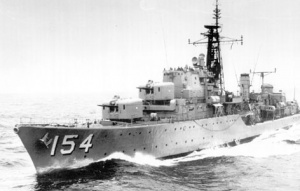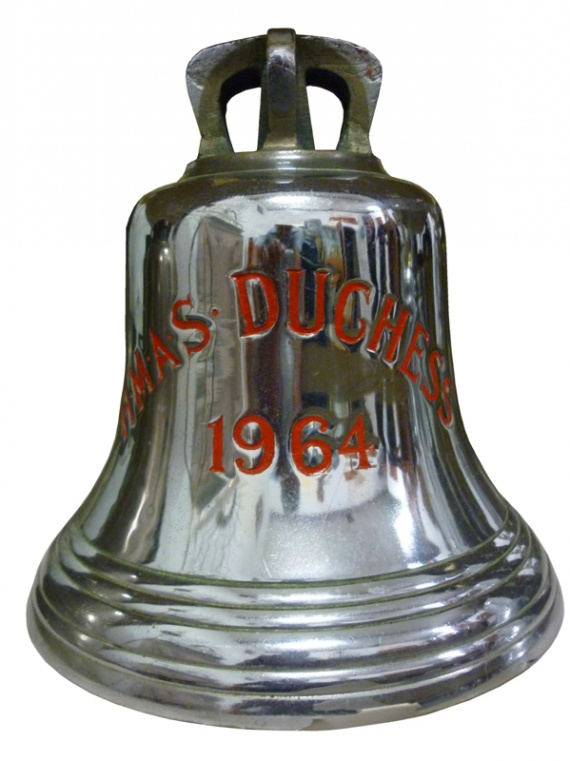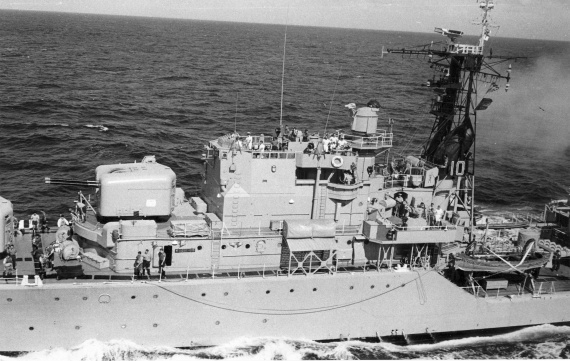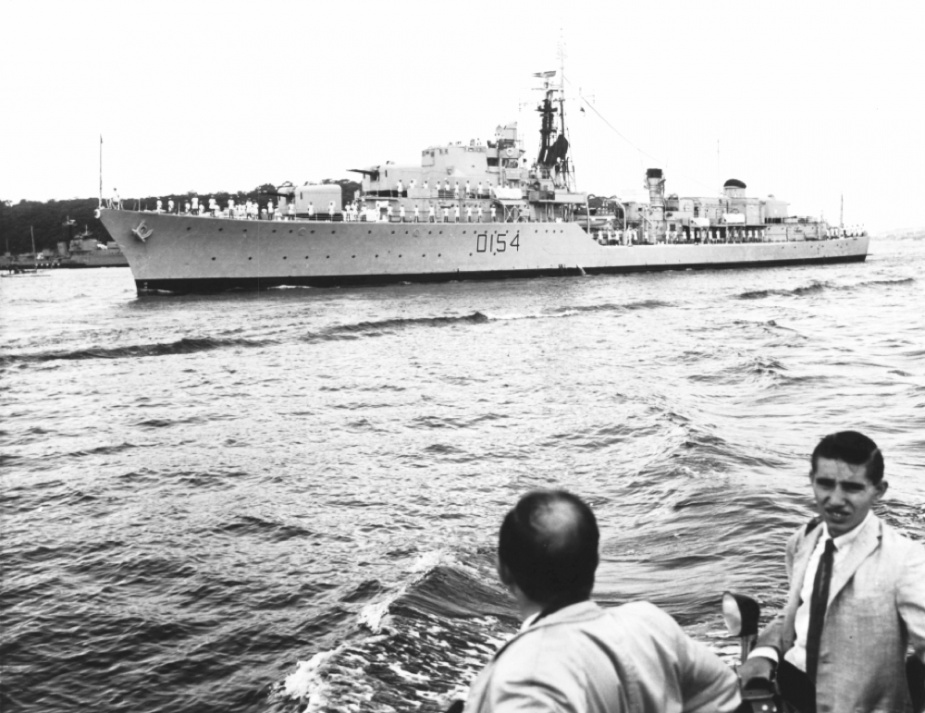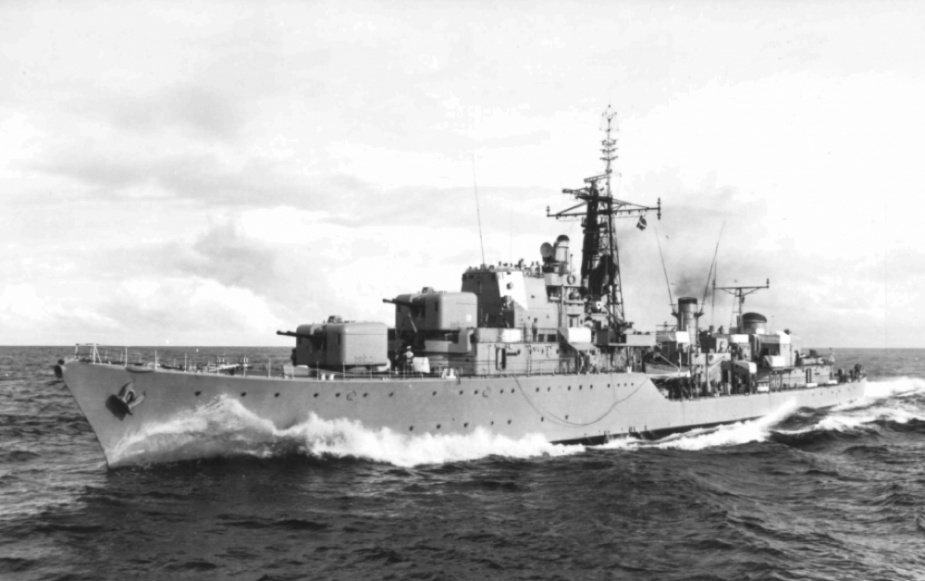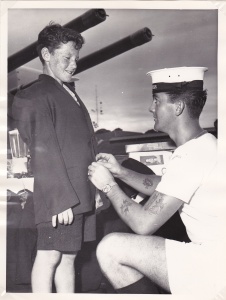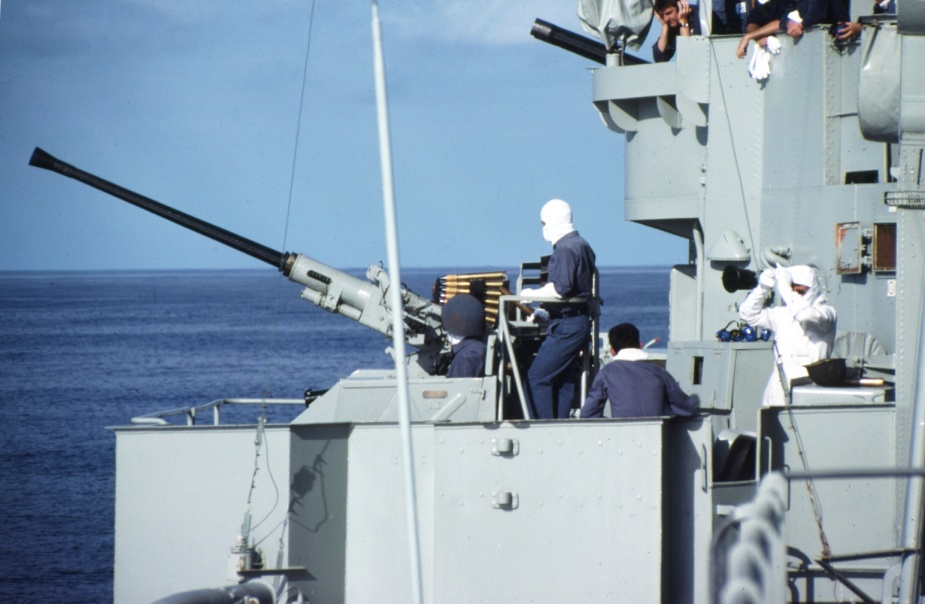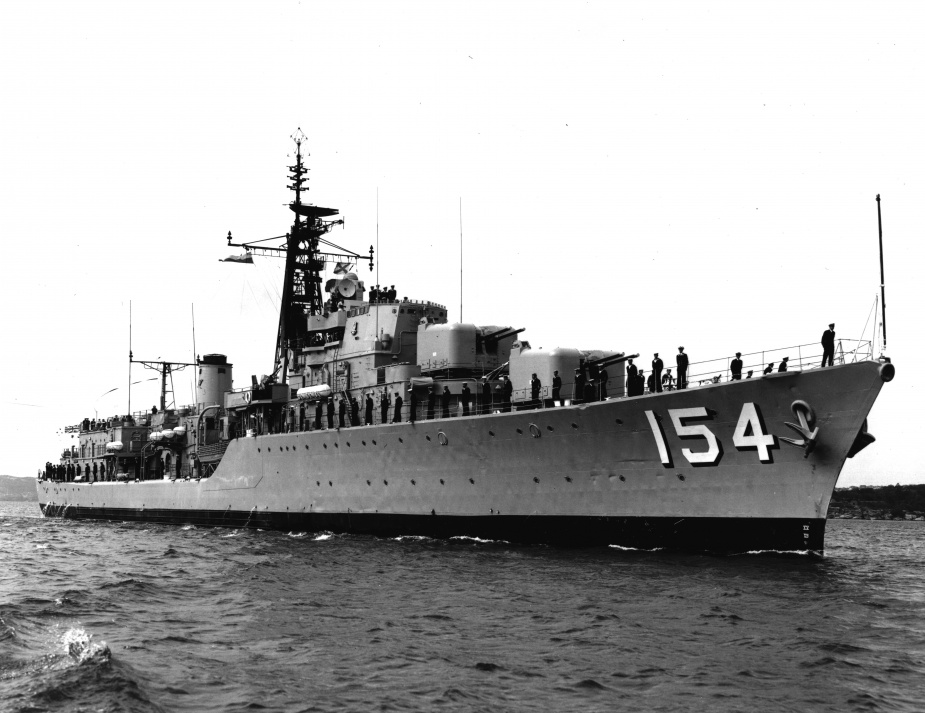HMAS Duchess
| Class |
Daring Class |
|---|---|
| Type |
Destroyer/Training Ship |
| Pennant |
D154 |
| International Callsign |
VKYT |
| Nickname |
'Her Ladyship' or 'The Lady' |
| Motto |
Duci Non Trahi (Led but not Dragged) |
| Builder |
John I Thornycroft and Co Ltd, Southampton, UK |
| Laid Down |
2 July 1948 |
| Launched |
9 April 1951 |
| Launched by |
Countess Mountbatten of Burma |
| Commissioned |
8 May 1964 |
| Decommissioned |
23 October 1977 |
| Fate |
Broken up in Taiwan by the Tung Ho Steel Enterprise Corporation in 1980 |
| Dimensions & Displacement | |
| Displacement |
|
| Length | 118.9 metres (390 feet) |
| Beam | 13.1 metres (43 feet) |
| Draught | 4.1 metres (14 feet mean; 17 feet maximum) |
| Performance | |
| Speed | 33 knots |
| Complement | |
| Crew |
|
| Propulsion | |
| Machinery | 2 Foster Wheeler boilers providing steam power to Parsons double reduction geared turbines driving two shafts |
| Horsepower | 54,000 |
| Armament | |
| Guns |
|
| Torpedoes | Initially 10 x 533mm (21-inch) torpedo tubes in two pentad mountings. The after mounting was removed in 1958-59, being replaced by a deckhouse for extra accommodation. |
| Other Armament | 1 triple-barrel Squid anti-submarine mortar |
| Awards | |
| Battle Honours | MALAYSIA 1964-66 |
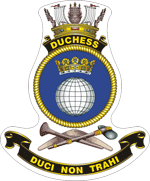
The Daring Class destroyer, HMS Duchess (V), was loaned to the Royal Australian Navy (RAN) by the Royal Navy (RN) after the tragic loss of the RAN’s Daring Class destroyer, HMAS Voyager (II), after her collision with the aircraft carrier, HMAS Melbourne (II), on the night of 10 February 1964.
The eight Darings built for the Royal Navy were considerably larger than previous destroyers, and their main armament was comparable to a light cruiser. The first three Darings featured composite/riveted construction, while the remaining five, of which Duchess was one, were of all welded construction. Weight was also saved by utilising light metal alloys and using neoprene sheathing and aluminium cable carriers in place of the more traditional lead and steel.
Duchess was launched on 9 April 1951 by the Countess Mountbatten of Burma, wife of Vice Admiral, the Earl Mountbatten, Fourth Sea Lord. She was commissioned on 23 October 1952 and joined the RN’s Home Fleet the following year. From September 1954 to July 1955, Duchess was attached to the Mediterranean Fleet, based at Malta. She was engaged in patrols off Cyprus and in operations off Port Said, Egypt during the Suez Crisis in late 1956. In the early 1960s, Duchess served in the Far East with the 24th Escort Squadron as part of Britain’s contribution to the Far East Strategic Reserve (FESR).
Four Darings were ordered for the RAN in the late 1940s though only three were built; HMA Ships Voyager (II), Vampire (II) and Vendetta (II). The fourth, to be named HMAS Waterhen, was cancelled. The Australian built Darings were similar to the eight vessels being built for the RN, but with modifications for Australian conditions, with good ventilation and air conditioning being a priority.
From an operational perspective, the loss of Voyager in February 1964 made it very difficult for Australia to meet its FESR and South East Asia Treaty Organisation (SEATO) Exercise commitments, particularly in 1964 and 1965. In response, the British Admiralty offered a choice of two Darings, HM Ships Defender or Duchess, on long term loan. Although badly in need of a refit; the latter ship was preferred because she was AC powered and partially air-conditioned. In addition, Duchess was currently serving in the Far East, whereas Defender was in Britain undergoing a major refit. Defender was DC-powered and not air-conditioned.
On 24 February 1964, just two weeks after the Voyager disaster, the Australian Government accepted the British offer. Duchess arrived in Sydney on 19 April 1964 with a combined RN/RAN ship’s company and a week later sailed for Williamstown Naval Dockyard for a much needed refit. She was commissioned into the RAN as HMAS Duchess (I) at Williamstown on 8 May with Commander Ian Burnside, RAN, in command. The RN component of the crew returned to the UK leaving the ship completely in RAN hands for the first time. Duchess remained at Williamstown undergoing refit until 20 November 1964 when she departed for her home port of Sydney. She arrived two days later and immediately began work-up in preparation for her first deployment on 19 January 1965.
Duchess arrived at Singapore on 6 February relieving Vampire and joining HMAS Derwent for FESR duties. Her first patrol commenced on 11 February off Pulau Jarak in the Straits of Malacca, and in the Straits of Singapore before returning to Singapore on 24 February for a self maintenance period. Duchess returned to Sydney on 19 March and departed for Williamstown the next day for leave and further maintenance.
On 29 April 1965, the Australian Government announced its intention to commit an infantry battalion to the escalating conflict in Vietnam. The Navy’s fast troop transport, HMAS Sydney (III), embarked the 1st Battalion Royal Australian Regiment (1 RAR) on 27 May and departed Sydney escorted by Duchess. The duo were joined by HMA Ships Parramatta (III), Melbourne (II) and Vampire (II) and replenished by HMAS Supply en route. On 8 June, shortly after reaching the operational area, Melbourne and Vampire detached, leaving Sydney, Duchess and Parramatta to continue on to Vung Tau. Once anchored, Sydney quickly commenced unloading operations with her escorts maintaining a protective screen. The three ships departed Vung Tau on 11 June, proceeding south to Singapore. Sydney and Duchess finally returned to Sydney on 5 July where Duchess entered a period of leave and maintenance.
Duchess put to sea on 11 August 1965 and proceeded northwards to Singapore for her second FESR deployment. Duchess was detached from patrol duties on 10 September and proceeded to Manus Island where she and Vendetta rendezvoused with Sydney and once again escorted the troop transport to Vung Tau. The trio anchored off Vung Tau on 28 September and, after Sydney had unloaded her army cargo, Duchess proceeded to Hong Kong for self maintenance. She departed Hong Kong on 26 October to return to FESR duties though was back in Hong Kong briefly over the Christmas/New Year period for further maintenance. Duchess departed again on 4 January 1966 to recommence patrols around Borneo and to act as Tawau Guard Ship.

